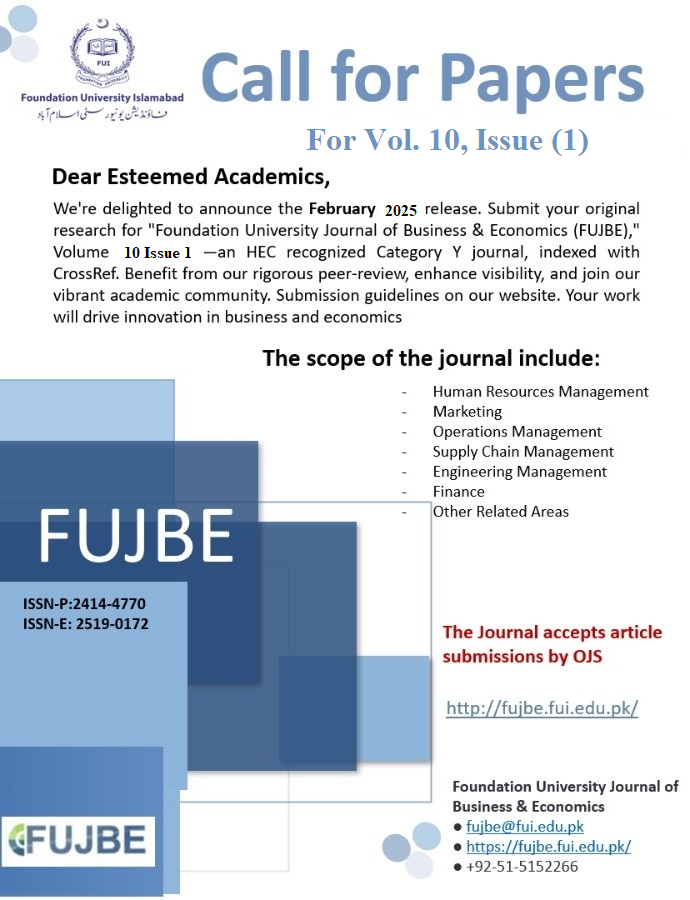Analyzing the Push Factors of Brain Drain in Pakistan
DOI:
https://doi.org/10.33897/fujbe.v9i1.890Keywords:
Brain drain, Push factors, Unemployment rate, Wage differential, Pakistan.Abstract
Brain drain is the emigration of skilled labor from the home country to the host country due to socioeconomic and political factors. This study focuses on push factors responsible for brain drain to twenty-seven destination countries from Pakistan. The study uses the annual time series data from the year 1976 to the year 2020. The theoretical framework for this study is based on the Neoclassical Theory of Migration and the Push-Pull Theory of Migration. The independent variables of the study are investment expenditure, political stability, real effective exchange rate, unemployment rate, and wage differential. Data is collected from World Governance Indicators, 2022, and World Development Indicators, 2022. According to the Augmented Dickey Fuller (ADF) test, all the variables are stationary at first difference. According to the results of co-integration test, investment and real effective exchange rate have negative insignificant effects, while political stability has negative significant impact; unemployment and wage differential have positive significant effects on brain drain from Pakistan. The long run results of brain drain model are in line with economic theory and supported by earlier studies. The results of this study suggest that in order to handle the issue of brain drain in Pakistan, a policy directive may be developed to address unemployment, exchange rate management, and the poor environment for investment. This will ensure that the skilled workforce is used domestically, which will improve the country's economy as a whole.



